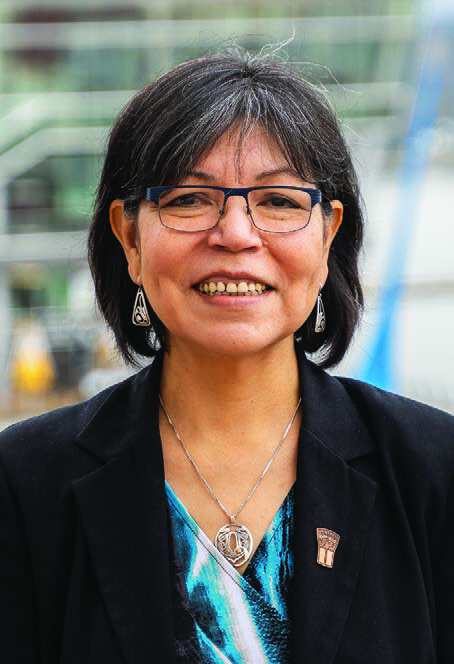
Corinne McKay, the newly appointed director of the AME, brings with her a wealth of experience managing finances for the Nisga’a Nation in the Nass River Valley of northwestern British Columbia.
McKay, 59, is secretary and treasurer of the Nisga’a Lisims government and lives in the village of Laxgalts’ap on the Nass River. She holds an MBA from Royal Roads University and a Bachelor of Commerce degree from UNBC and is a former general manager of the Northern Native Fishing Corporation.
“In the position I’m in currently, you tend to be looking at issues from only the Nisga’a perspective,” she says. “I think [joining the AME board] is a great opportunity to understand the issues that are being faced by others and the direction everyone is going in with respect to exploration and mining.”
In 2017, 40 per cent of total exploration spending in B.C. was dedicated to the province’s northwest region – otherwise known as the Golden Triangle – making negotiations with First Nations groups in the area of critical importance to the region’s economic and environmental future.
An agreement that governs the use of land and resources on 2,000 square kilometres of traditional Nisga’a land came into effect in 2000 as the first modern-day comprehensive treaty in British Columbia. It was negotiated between Canada, B.C. and the Nisga’a Nation outside of the B.C. treaty process.
Once sustained by fishing and forestry, the Nisga’a are making forays into exploration and mining as the other sectors become unreliable sources of income and employment. Commercial fishing in the Nass Valley is becoming particularly precarious as salmon stocks decline, and last year the valley was hit with its first serious drought.
In 2015, the Nisga’a signed a long-term cooperation and benefits agreement with Pretium Resources Inc., owner the Brucejack gold mine north of Stewart that entered commercial production in mid-2017. Under the terms of the agreement, the Nisga’a will support safe, environmentally sound mining at Brucejack while Pretium is committed to providing jobs, contracting opportunities, education, training and financial payments to the Nisga’a people.
The First Nation is currently negotiating a separate agreement with IDM Mining, which is advancing its wholly owned Red Mountain gold project in the Golden Triangle. Both the the Nisga’a Nation and IDM are part of the B.C. Regional Mining Alliance (BCRMA) which was established early in 2018 and is focused on northwestern B.C. and represents key projects specifically in the Golden Triangle. BCRMA is also made up of the Tahltan Central Government, AME and the provincial government; other industry members include Dolly Varden Silver Corp., GT Gold Corp. and Skeena Resources Ltd.
“We’re not opposed to development on our lands but we appreciate respectful dialogue with proponents,” says McKay. “Our neighbours to the north, the Tahltans, have been engaged in mining for years but it is relatively new to us. If there are going to be any projects, we want to make sure we are in the driver’s seat, but we are open to having conversations and to learning more.”
An natural affinity for numbers gave McKay an aptitude for business and commerce, which in turn led to opportunities to help organizations in the northwest with their finances on both a professional and volunteer basis. She has served as a council member for the Gitwinksihlkw village government, volunteered as chairperson and treasurer of the Prince Rupert Nisga’a Local, and taken on a variety of work roles from bookkeeper to college instructor.
She is also a proponent of youth sports and, in that capacity, has coached girls’ basketball teams in both Prince Rupert and more recently in the Nass Valley where she moved with her husband about a decade ago. Her Nisga’a name is Bilaam Neekhl, meaning “Pearly Fin” and she is learning the Nisga’a language. She has three children and twin granddaughters.
Beyond providing a fresh perspective and increasing board diversity, McKay will contribute a deep knowledge of her region, its people and their goals as a nation to the AME board.
“We want to be aware of the opportunities but also to ensure that the environmental protection terms of our treaty are complied with,” she says. “We want to be sure the land is pristine enough to sustain our children and grandchildren. It’s not just my philosophy. It’s the practice of our people.”
